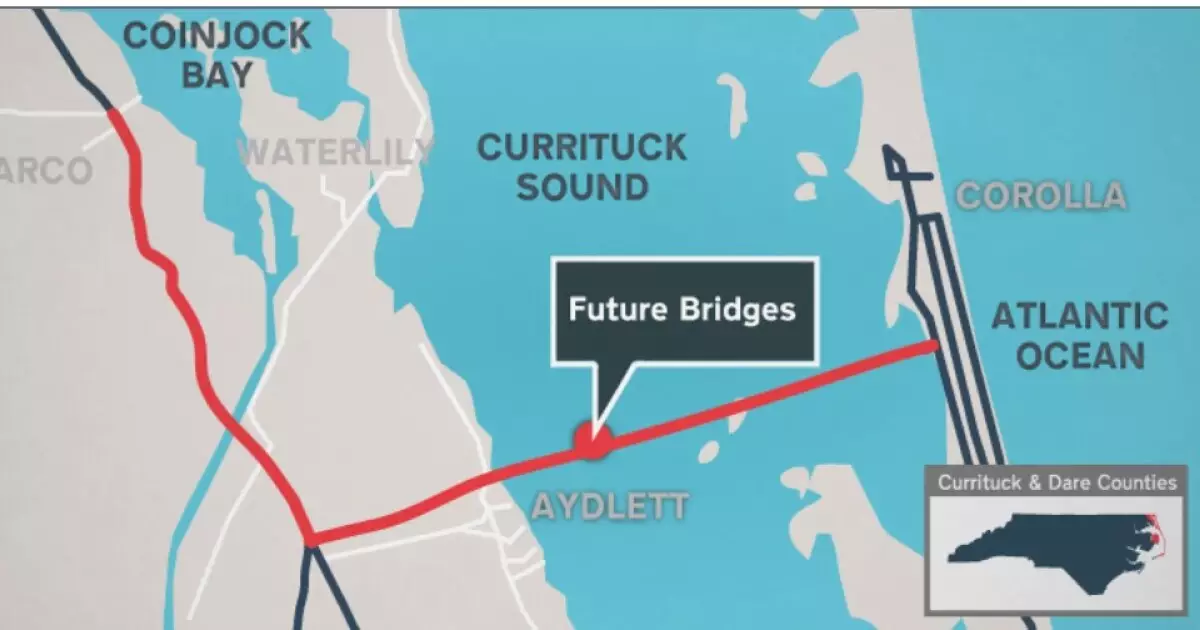Revamping North Carolina’s Transportation: The Controversial I-77 Toll Project

In a bold move aimed at addressing chronic congestion in Charlotte, North Carolina, the state has embarked on its largest transportation initiative to date. This ambitious project, primarily focused on expanding an 11-mile stretch of Interstate 77, has gained traction through a public-private partnership (P3) structure, following crucial endorsements from local governing bodies. The endeavor is set to widen the already-busy corridor, converting it into a 10-lane highway with the introduction of two express lanes in both directions. However, the journey toward realization has not been without controversy, particularly given the financial implications and community sentiments regarding tolls.
With an estimated cost of $3.7 billion, the proposed expansion is marked as the most expensive transportation project in North Carolina to date. The financial stakes are further heightened by the assertion from officials at the North Carolina Department of Transportation (NCDOT) that every year of delay could incur an additional $100 million in costs. This places severe pressure on the state’s budget, as officials admit they lack the necessary funds for this undertaking on their own. A range of local and federal stakeholders recognizes the project’s critical nature, as it has long been in the discussion phase, exacerbated by the rapidly growing population in Charlotte and the surrounding regions.
Public-Private Partnership: A Path Forward
The approval from the Charlotte City Council and the Charlotte Regional Transportation Planning Organization signifies a strategic pivot towards leveraging private investment for infrastructure development. Notably, this project may pave the way for other P3 endeavors, particularly in the Southeast, where states like Georgia and Tennessee have begun to embrace similar strategies to finance toll road projects. However, North Carolina’s approach has not been without its critics who cite lessons learned from earlier projects, such as the I-77 North express toll lanes—operated by Cintra, a Spanish firm—where user dissatisfaction and contract terms caused widespread concern.
The recent vote in favor of pursuing this new concession agreement has been described as a necessary step to keep the momentum alive for the project despite previous experiences that reported dissatisfaction among users. City Council member Ed Driggs highlighted that while managed lanes may not be well-received, it is essential to maintain progress in light of escalating costs and the absence of a clear plan. The aim is to approach the structuring of the P3 arrangement more carefully and thoughtfully this time around.
The push for a better deal is rooted in the overarching goal to avoid repeat outcomes reminiscent of the I-77 North express toll lane experience. Both the stakeholders and the public are closely watching how NCDOT plans to integrate citizen feedback into this new contract. As much as the new project is positioned as a solution to congestion, the question remains whether it will alleviate the financial burdens placed on drivers and the local economy. With the state aiming to release a Request for Qualifications by next August, there is a palpable sense of urgency reflecting the significant interest from firms around the world.
Furthermore, NCDOT’s findings indicate that utilizing a P3 delivery model can potentially reduce costs by approximately $500 million compared to a traditional project delivery method. Clearly, the financial advantages are appealing; however, it is vital that this model is executed transparently to build public trust.
During the board meeting, NCDOT officials voiced concerns about the transportation needs in urban areas becoming overwhelming and unprecedented. The urgency of the matter can no longer be denied, as many members expressed that failing to advance the project could result in irrevocable consequences. Striking a balance between effective transportation solutions and community skepticism towards tolls is now imperative.
As transportation planners gear up to construct a working group with CRTPO, the spotlight will remain on examining the feasibility, viability, and community impacts of the proposed toll lanes. Ultimately, creating an accessible and efficient transportation network is the long-term aspiration, but that journey will necessitate continuous dialogue and compromise amongst all stakeholders involved.
The I-77 toll lane expansion encapsulates a critical juncture for North Carolina’s transportation strategy. While the path forward is riddled with complexities, the adoption of a P3 model presents an innovative means to accelerate infrastructure projects amid budget constraints. However, as the state takes significant steps into the realm of toll lanes, the need to address previous failures, prioritize community engagement, and maintain fiscal prudence will be crucial in shaping a transportation network that is both effective and equitable for all.





